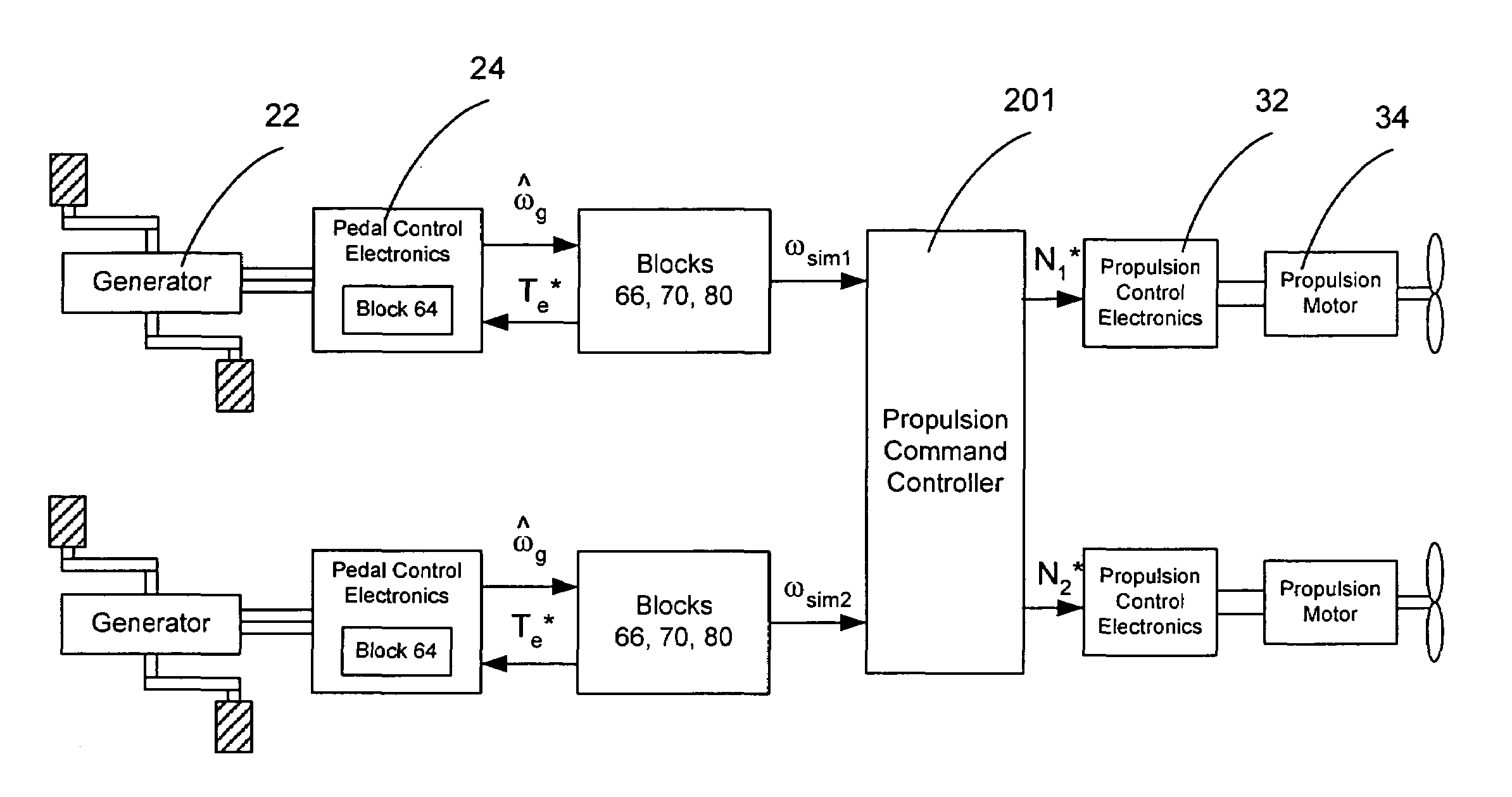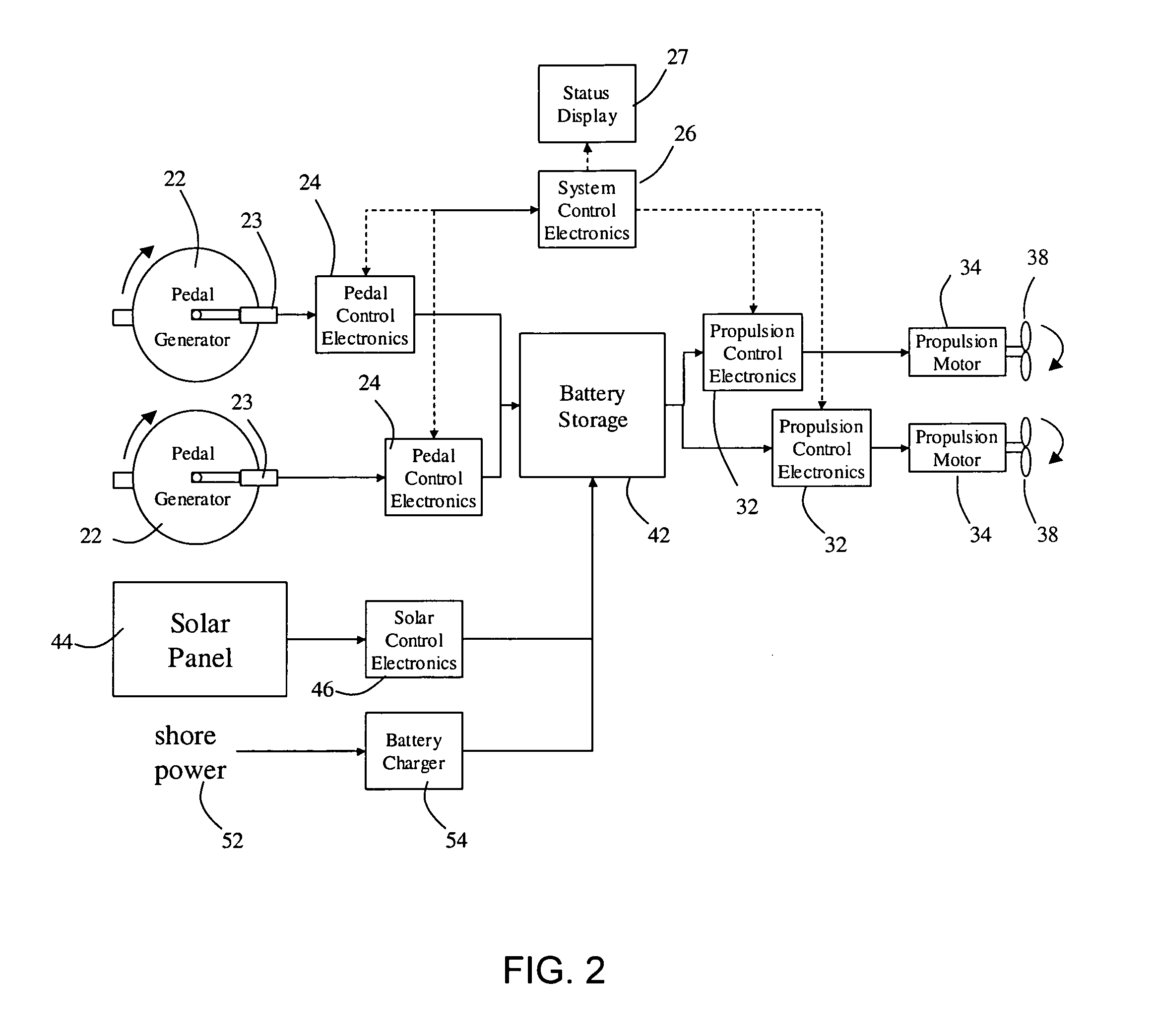Human-powered generator system with active inertia and simulated vehicle
a generator system and human-powered technology, applied in the field of watercraft, can solve the problems of reduced power output capability of operators, limited power capacity of pedal-powered watercraft, and mechanical properties such as rotational inertia as perceived by operators at the input pedal mechanism, and achieve the effect of rapid stopping and reversing of watercycles
- Summary
- Abstract
- Description
- Claims
- Application Information
AI Technical Summary
Benefits of technology
Problems solved by technology
Method used
Image
Examples
Embodiment Construction
Description and Operation
[0060]FIGS. 1–4 illustrate aspects of the electric watercycle disclosed in detail in U.S. Pat. No. 6,855,016 (Jansen). FIG. 1. provides a perspective view of a twin-hull embodiment of an electric watercycle designed for two operators utilizing this invention. Two propulsion electric motor units 33 provide propulsion and steering via individual control of the motor thrusts. Steering can alternatively be accomplished via one or two rudders (not shown).
[0061]A foot pedal and crank arm assembly 23, similar to that common to bicycles, connects to the shaft of an electric generator 22. The watercraft operator rotates the generator via pedaling. Mechanical (i.e, kinetic) power of the watercraft operator's pedaling action is converted to electrical power via the generator. Though foot pedals 23 are shown, the pedal generator may instead have handgrips and positioned to utilize upper body motion, rather than leg motion.
[0062]The generator 22 is preferably a direct-dr...
PUM
 Login to View More
Login to View More Abstract
Description
Claims
Application Information
 Login to View More
Login to View More - R&D
- Intellectual Property
- Life Sciences
- Materials
- Tech Scout
- Unparalleled Data Quality
- Higher Quality Content
- 60% Fewer Hallucinations
Browse by: Latest US Patents, China's latest patents, Technical Efficacy Thesaurus, Application Domain, Technology Topic, Popular Technical Reports.
© 2025 PatSnap. All rights reserved.Legal|Privacy policy|Modern Slavery Act Transparency Statement|Sitemap|About US| Contact US: help@patsnap.com



